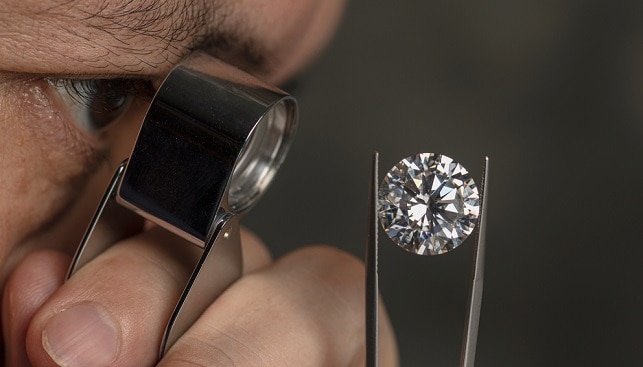One of the unique optical properties of diamonds is their ability to break light rays on their way to penetrate the diamond. Light rays do not pass through the diamond, but are instead broken and reflected back in different angles. This optical trait of breaking light rays and reflecting them back creates the diamond’s unique sparkle.
Where the Light Hits
Some of the rays that penetrate the diamond are broken and are reflected back through the facets of the crown. This reflection creates a sparkle – the diamond’s “fire”. Due to the different angles in which some of the light is reflected back, the light reflected back from the diamond is white. The rays reflected through the diamond’s table as white light are called “brilliance”.
Rays of Light Divided into Colors
The light rays that reflect back through the facets of the crown are partially broken, like rays of light passing through a prism. The light is divided into the colors of the spectrum: red, orange, yellow, green, blue, and violet.
These colors flash through the polished facets, and the play of colors at different angles create the diamond’s fiery look and brilliance.
The Mirror-Like Effect
Another optical trait of the diamond is their mirror-like effect. Unlike glass, which allows the light to penetrate it and “move on”, diamonds break light rays that penetrate them.
This quality creates a mirror-like effect – light bouncing back to the viewer, which keeps him from looking “through” the diamond. Glass has a low reflective index (1.50), while the diamond has a reflective index of 2.42. Therefore, one cannot “look through” a diamond. Instead, the ray of light creates a mirror-like effect by reflecting back the light.













